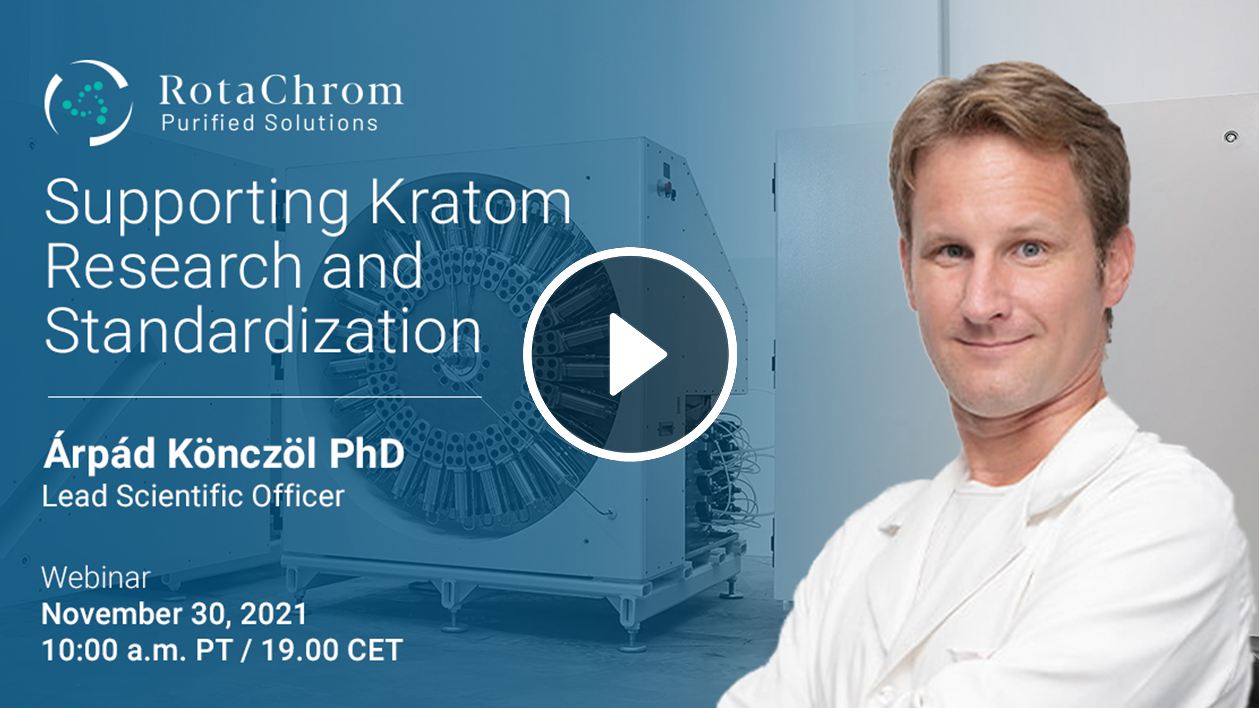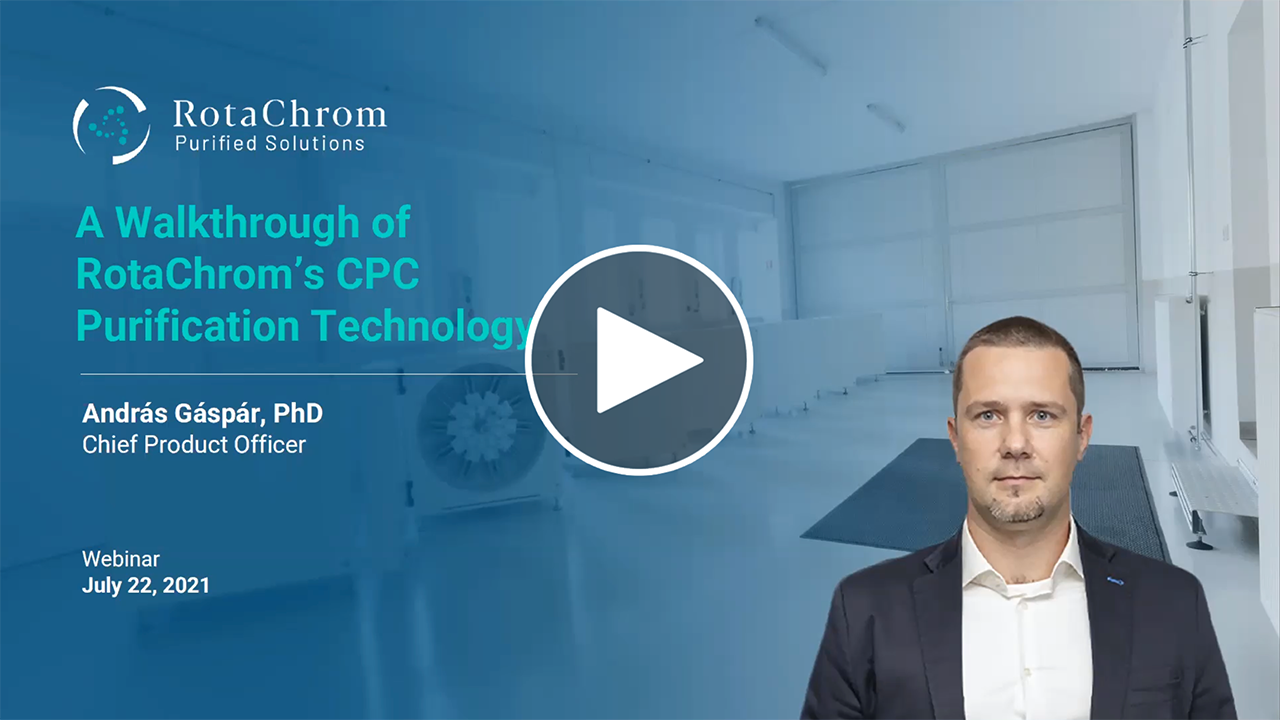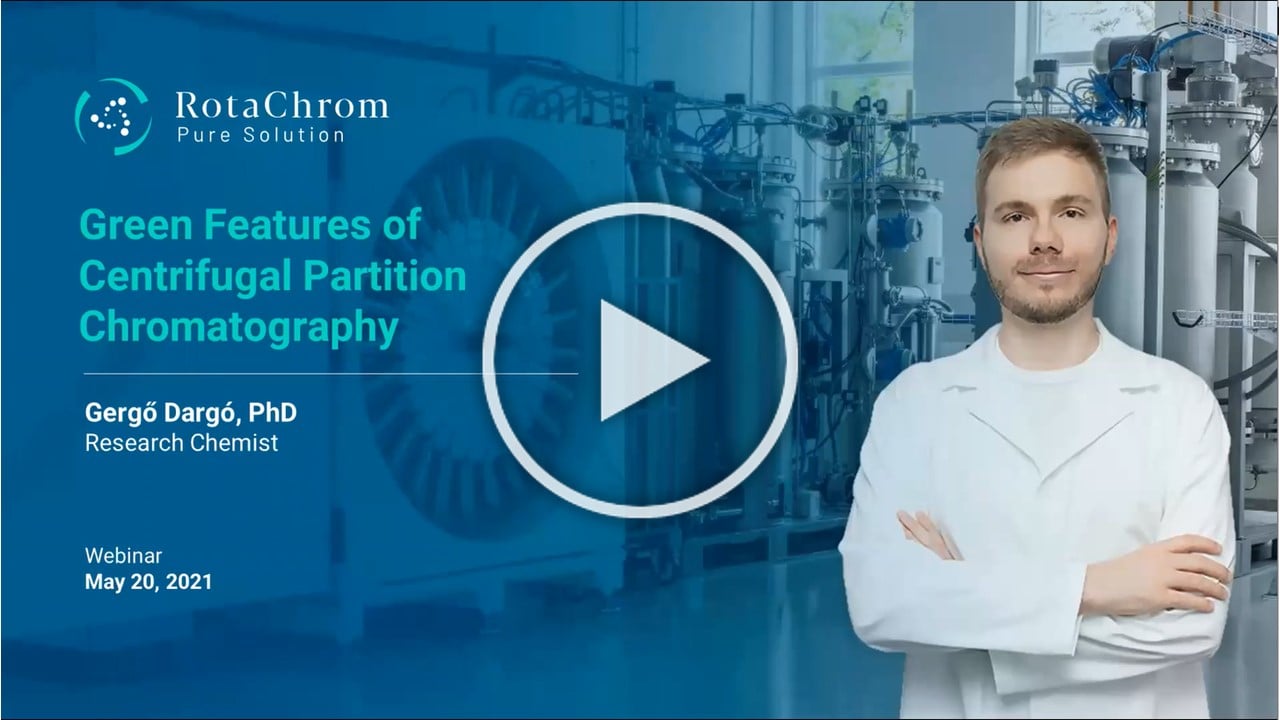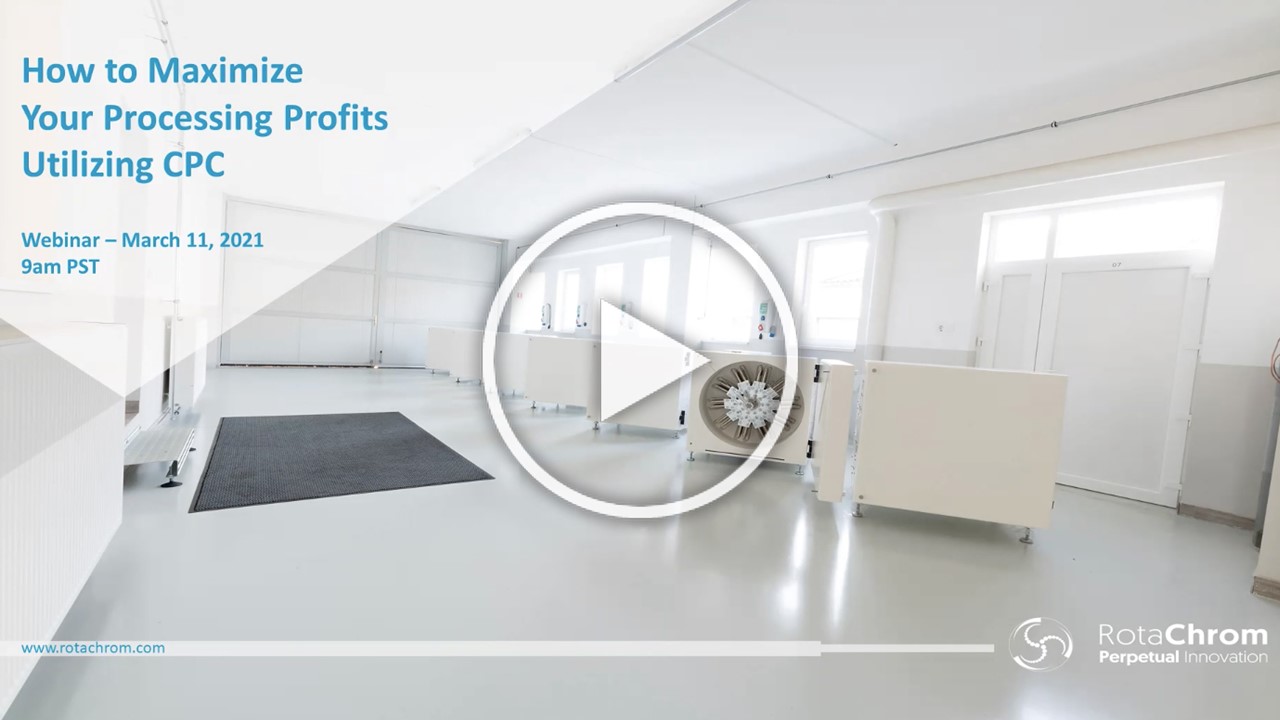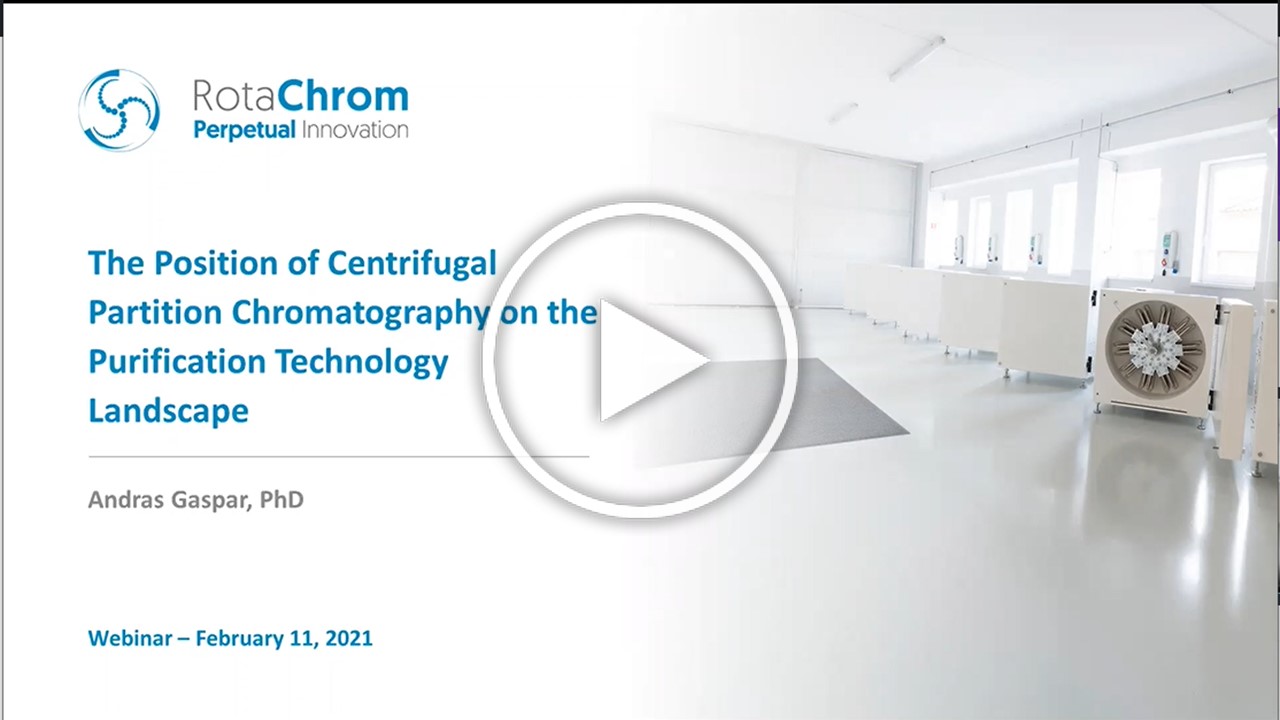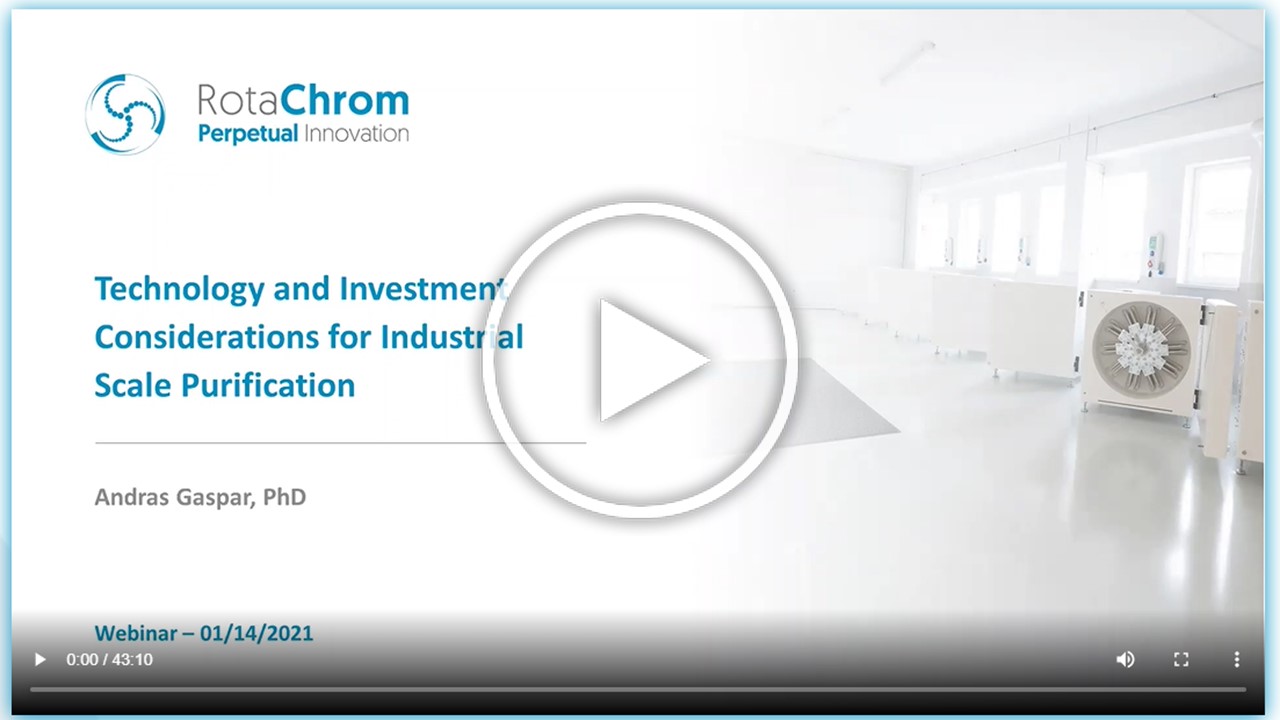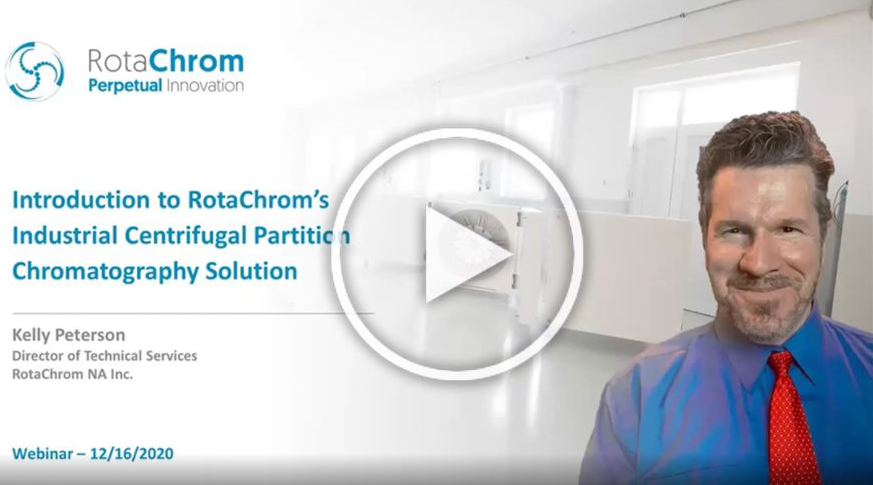Webinar 5 – Pesticides Remediation by Centrifugal Partition Chromatography
In this webinar, Arpad Konczol, PhD, Head of Research Laboratory at RotaChrom explains the pesticide removal capability of RotaChrom’s CPC technology, exemplified by the isolation of Cannabidiol (or CBD). He also highlights the importance of the issue of Cannabis contaminants with special focus on the risks and regulations associated with pesticide residues.
Like any other natural products, the biomass of legal Cannabis can be contaminated by several toxic agents such as heavy metals, organic solvents, microbes, and pesticides, which significantly influence the efficiency and safety of the end products.
Let’s just consider the toxicological effects. Since cannabis products are not only administered in edible forms but also smoked and inhaled, unlike most agricultural products, residue pesticides pose an unpredictable risk to consumers. One example is the potential role of myclobutanil in the vape crisis.
Unfortunately, federal and state laws are still conflicting on Cannabis-related pesticides. Currently, only ten pesticide products have been registered specifically for hemp by the U.S. Environmental Protection Agency. So, the question arises what has to be done with all the high-value but also contaminated cannabis, keeping in mind that during the extraction processes, not only the phytocannabinoids are getting concentrated but the pesticides as well, reaching even concentrations of up to tens or hundreds of parts per million!
Currently, there are three different sets of rules in place in the regulatory areas of Oregon, California and Canada. These regulations detail which pesticides need to be monitored and remediated if a certain limit for each is reached. Because the most extensive and strict regulations are found in Canada, RotaChrom used its regulations as reference in their case study.
To illustrate that reality sometimes goes beyond our imagination, I present here the testing results of a THC distillate sample of one of our clients. This sample contained 9 (!) pesticides, of which six’s levels exceeded the corresponding action limits. The most frightening, however, regarding this sample, is that it contained a huge amount of carbofuran, a category I substance. It is better not to think of the potential toxicological hazard of this material…
The CPC-based purification of CBD is a well-known and straightforward methodology. As the elution profile on the CPC chromatogram of a distillate shows, major and minor cannabinoids can be easily separated from CBD. At RotaChrom, this method has been implemented at industrial-scale in a cost effective and high throughput fashion. In any case, the question arises: where are the pesticides on this chromatogram? To answer this, we set ourselves the goal to fully characterize the pesticide removing capability of our methodologies.
Our results in this topic were awarded at the prestigious PREP Conference in 2019. The ease of pesticides removal depends on the desired Compound of Interest.
Here is a quick recap on key functionalities of the partition chromatography.
- Separation occurs between two immiscible liquid phases.
- The stationary phase is immobilized inside the rotor by a strong centrifugal force.
- The mobile phase containing the sample to be purified is fed under pressure into the rotor and pumped through the stationary phase in the form of tiny droplets (percolation).
- The chromatographic column in CPC is the rotor: cells interconnected in a series of ducts attached to a large rotor
- Simple mechanism: difference in partition
Let’s get into the chemistry a bit:
The partition coefficient is the ratio of concentrations of a compound in a mixture of two immiscible solvents at equilibrium. This ratio is therefore a comparison of the solubilities of the solute in these two liquid phases.
The CPC chromatogram demonstrates the separation of Compounds of Interest based on their unique partition coefficients achieved through a centrifugal partition chromatography system.
CPC can be effectively used for pesticide removal. About 78% of the pesticides around CBD are very easy to remove, which you can see in the video above.
WATCH ALL WEBINARS

11-30-21
Supporting Kratom Research and Standardization
7-22-21
A Walkthrough of RotaChrom's CPC Purification Technology
5-20-21
Green Features of Centrifugal Partition Chromatography
The session lasts about 20 minutes, with a live Q&A after.
4-15-21
Pesticides Remediation by Centrifugal Partition Chromatography
3-11-21
How to Maximize Your Processing Profits Utilizing CPC
2-11-21
The Position of Centrifugal Partition Chromatography on the Purification Technology Landscape
1-14-21
Technology and Investment Considerations for Industrial Scale Purification
12-16-21
Centrifugal Partition Chromatography on an Industrial Scale
QUESTIONS? GET IN TOUCH!


